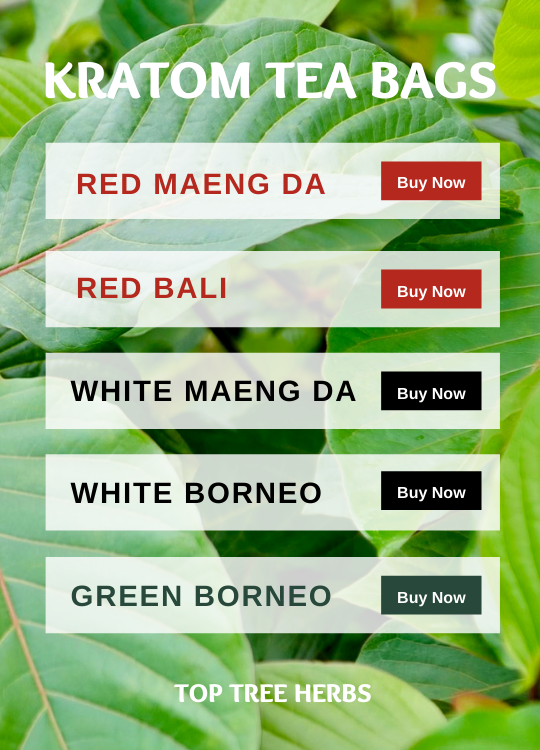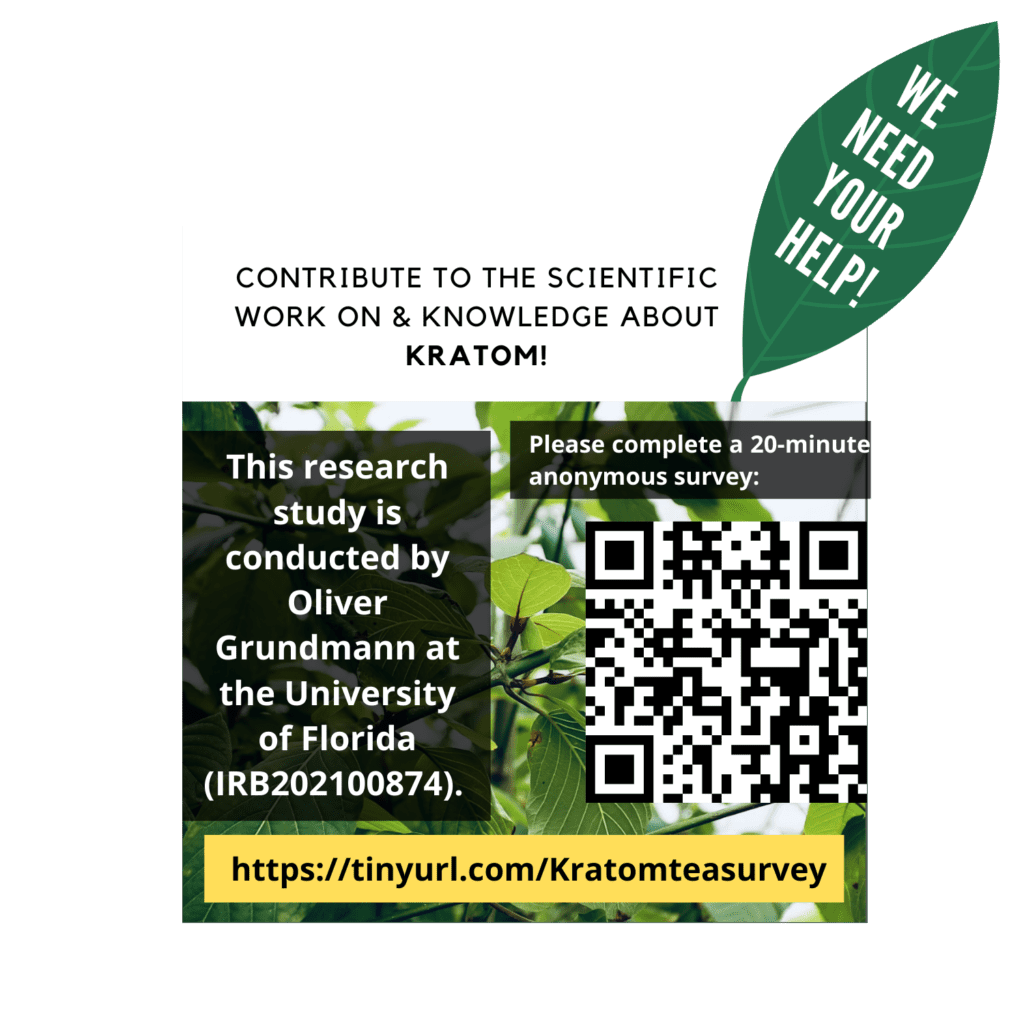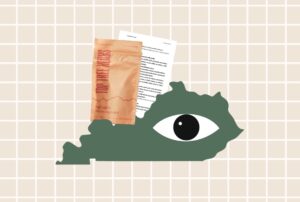December 2021 Update: We’re unbelievably excited to share the news: the WHO Committee has officially “concluded that there is insufficient evidence to recommend a critical review of kratom.” In other words, we won! Kratom is here for the long haul – there won’t be an international ban. Read our post on this monumental victory!. And thanks again for every kratom consumer who took the time to submit a comment for the WHO review board. Now, let’s take a moment to celebrate – cheers!
Overview of Kratom Legality
The legality of kratom is often in question. For years it have been a stalwart citizen of the grey market. Yet legality of kratom has been challenged a number of times, on a number of levels. In this post we will recount what, exactly, kratom is. Then, we will discuss the various legal challenges kratom has had over the years.
Starting in Thailand in the 1940s and to its challenges at the state and federal level in the United States. Finally, we will reflect on the latest challenge to the legality of kratom. That is, the FDA and WHO’s consideration of adding kratom to the UN’s list of prohibited substances.
Rundown of Kratom for the Unfamiliar
“Kratom” is the leaf of an evergreen tree that grows in the tropics throughout SouthEast Asia. The tree, Mitragyna speciosa, is a botanical cousin of coffee. In the wild it can grow upwards of 80 feet tall. Some trunks have been reported as having a diameter greater than 14 feet. The leaves are a vibrant green and usually have red veins. In the leaves are a plethora of psycho- and bio-active alkaloids. These alkaloids are responsible for the therapeutic effects of kratom that have been known and employed for well over 350 years. The first 200 years passed without any consideration of the legality of kratom.
Like coffee, kratom is traditionally used for its energizing effects by Thai laborers and farmers. It allowed them to work longer, harder hours in the beating sun for days on end. And because kratom grows wild in Thailand, it was frequently consumed straight from the tree.
Kratom As a Food
To take kratom as a fresh leaf, which is the oldest and simplest traditional method, you start by plucking it from the tree. Then, tear the hard petiole and midrib from the soft leaf lamina, and roll it into a cylindrical quid. Then, take the small quid and gently chew it, being careful not to macerate the leaf. It is best to be careful with it as you are only trying to “juice” it.
Next, let the juice make contact with as much of the inside of your mouth as possible. In our mouths we have something called a mucus membrane. It is a soft barrier that allows the kratom alkaloids to permeate and directly enter the bloodstream. You’ll notice that we all have two large blood vessels under our tongues. These allows for a very quick turnaround from chewing the leaf to feeling the effects.
If you chew too voraciously your mouth will be filled with leaf particles. These have a tendency to stick between your teeth and tickle the back of your throat.
Luckily, the way to consume kratom was quickly improved. Soon brewing kratom leaf into a tea rivaled the popularity of chewing kratom. Today, both are considered to be “normal” in areas with a traditional kratom practice. You’ll notice, however, that swallowing the actual leaf is not a part of the common, traditional practice. We’ll return to this small but important detail later.
The Origin of the Kratom Legality Controversy
In 1943, Thailand was in the thick of its involvement in WWII. One of the government’s most substantial revenue generators was its opium taxes. Much of the populace bought and used legal, taxed opium, yet as the war raged on the taxes were increased, and poverty became the norm. As a result, people turned to kratom. It was effective and free – literally “growing on trees” – but the government didn’t like the lost tax revenue.
In a special meeting on January 7, 1943, Police Major General Pin Amornwisaisoradej said, “Taxes for opium are high while kratom is currently not being taxed. With the increase of those taxes, people are starting to use kratom instead and this has had a visible impact on our government’s income.”
As the need for taxes ramped up during the war and opium use was dwindling, kratom was made illegal. The war on kratom ramped up in the 1970’s as the global war on drugs kicked into a higher gear. Soon, entire forests of wild-growing kratom trees were razed – voiceless victims to the terror of the drug war.
Modern Incarnation of the Prohibitionist Spirit
Today, kratom’s legal status is fractured, confusing, and still not based on scientific evidence. Most of the kratom users in the world now reside in the United States. In the US it is a popular food product and supplement. Since its introduction into the market, kratom has drawn the ire of regulatory bodies. There are, of course, several reasons for receiving this cold shoulder treatment.
One, the US is still deeply tied to it’s prohibitionist roots. The mentality of “changing-your-consciousness-in-any-way-is-bad” still pervades the minds of many in power. This, coupled with how kratom is marketed by a few “legal high” vendors, has resulted in some terrible PR for this traditional tea leaf. Lastly, can one help but question whether the historical cause of banning kratom in Thailand applies to the US today?
How Kratom is Frequently Used in the US
Before we get into the legal and historical context surrounding kratom in the United States, we should first familiarize ourselves with its economics. Kratom is primarily grown in Indonesia for the commercial market. Thu, these inconspicuous leaves have to cross almost 9000 miles of ocean before landing on the North American Pacific coast.
To make this feat more economical, it has become common practice to dry the leaves before grinding them into a fine, micronized powder. As a powder, farmers are able to fit roughly three times as much leaf matter into the shipping containers. And since most international shippers charge per the container, this results in considerable savings.
Although this price saving maneuver may look innocent from the offset, it has resulted in a diminished kratom experience. With kratom being largely unknown in the United States, it is of no surprise that most people have no idea how to use it.
So with tons of kratom powder being imported into the United States on a daily basis, without any instructions for use, people had to improvise how to consume it.
Enter, Toss and Wash
Imagine this scenario. Someone hands you a bag full of a green powder, and tells you that it can help you with this or that problem or that it has a productive, energizing effect. Then they leave, leaving you with a bag of powder that you know you need to consume… somehow.
For starters, at this stage chewing it as a fresh, whole leaf is completely off the table. The other traditional method, brewing it into a tea, is also quite difficult. Few sieves or paper filters are fine enough to stop the micronized powder from passing through it’s mesh. This, of course, is also making the assumption that the person with the bag of kratom powder is even aware that there is a traditional practice to emulate.
A Common Way to Consume Kratom
For most, the move is to put a tablespoon or two of powder into a glass of water. The glass is stirred vigorously like a matcha, then drunk rapidly to ensure that the suspended kratom powder is swallowed. True, this is a viable way to derive the benefits and effects of the plant. However, it comes with many unnecessary disadvantages.
As mentioned earlier, kratom was/is very rarely, if ever, swallowed in it’s traditional setting. The reason for this is not that hard to guess. Putting grams of a dried leaf powder into your stomach can dehydrate you, cause nausea, and expose you to any impurities picked up following harvest. Realistically, all that you want from the kratom is the couple dozen milligrams of alkaloids dispersed throughout the lignocellulose of the leaf.
Traditional Preparation
Chewing on fresh kratom leaf avoids the negative effects of swallowing the powder. Absorbing the kratom alkaloids through the mucus membrane of the mouth completely avoids the stomach. The same goes for tea. When you brew a tea with kratom leaves, you will be left with an aqueous solution of kratom alkaloids, but no solid particulates.
Despite the many years that kratom has been in the United States, this consideration has largely been ignored or unheard. This is demonstrated by the rising popularity of kratom powder capsules, and the act of “tossing and washing.”
Tossing and washing is when you fill your mouth half full with water, and then float some kratom powder in your mouth. You then chug water as you swallow the floating leaf mass in your mouth. Some have perfected the act, and claim to not taste the powder or experience any irritation. Many others (including the author of this post) are frequently reduced to a coughing, wheezing fit. Filling the air with a green dust, mucus oozing from their facial orifices.
Another Coffee Analogy
In fact, we often compare the act of tossing and washing with swallowing ground espresso beans. Imagine you are at a coffee shop and you ask the barista for a simple espresso. You watch as they grind the beans and measure them into the espresso filter. Yet instead of tamping it and inserting it into the machine to brew a delightful beverage with a delicious brown crema, you are given the powder to swallow. The barista assures you that you will indeed still feel the effects of the caffeine. Yet because you know that there is a better way to consume coffee, you’d feel ripped off.
That is how we feel when anyone takes kratom outside of the traditional routes. Why not take the extra time to brew a delicious, golden colored cup of kratom tea? I promise it’s better than just swallowing the powder.
Kratom Controversy
With kratom coming in by the literal boat-load, with no instructions, as a fine powder, many merchants were left wondering how to sell it. The path of least resistance, as it turns out, was via the head shop marketplace. Today, you can find kratom powder and capsules at just about any headshop and gas station in America. From this perspective, it outwardly appears that kratom has no legality troubles.
In part, this has played a role in hurting the public image of kratom. To many Americans, head shops and gas stations are not locations where you go tea shopping or where you look for wellness products.
Still, this bad publicity is undeserved. In 2016, the FDA cited 44 deaths linked to kratom as reason to ban it. After further digging, it was uncovered that 43 or these 44 deaths were the result of other substances in the deceased’s bodies. As a matter of fact, one of those deaths wasn’t the result of an overdose of any sorts, but rather a bullet to the chest. Thinly veiled deceptive acts such as this makes us wonder if there is an ulterior motive behind the campaign to criminalize this leaf and the millions of people who use it.
Kratom Legality
Currently, in the United States, there is no federal law regarding kratom. However, there are six states which ban the sale of kratom. These states are: Arkansas, Alabama, Indiana, Wisconsin, Vermont, and Rhode Island. Kratom is illegal in these states partially as a result of the DEA being unable to schedule kratom in 2016. Failing at the federal level, they then lobbied individual states and municipalities, failing in many, but succeeding in a few. Some states had made kratom illegal or were working on changing the legality of kratom prior to the 2016 listing.
(Alabama—Ala. Code § 20-2-23; Arkansas—Ark. Admin. Code 007.07.2; Illinois—IL ST CH 720 § 642/5; Indiana—IC 35-31.5-2-321; Louisiana—LA R.S. 40:989.3; Tennessee—T.C.A. § 39-17-452; Vermont—Vt. Admin. Code 12-5-23:4.0; Wisconsin—W.S.A. 961.14 and District of Columbia—22-B DC ADC § 1201.)
So, what happened in 2016?
In 2016, the DEA listed on the federal register that they would be emergency scheduling kratom, and would place it into Schedule 1 categorization. Schedule 1 controlled substances are considered to have no medical value and a high abuse potential. Neither of which apply to kratom, but that hasn’t stopped the scheduling of cannabis, psilocybin, LSD, peyote, heroin, and a number of other drugs which do impart a great deal of therapeutic effects. This was the first major strike at the legality of kratom.
The federal register is a website operated by the National Archives and Records Administration, and according to the Controlled Substance Act, a substance must first be publicly listed there before being made illegal. This allows, in theory, for the public to have an opportunity to comment on each particular substance, which will then be considered in a later administrative hearing. Of course, how many people do you know that regularly check the federal register?
A Winning Fight
In response to the DEA’s irrational listing of kratom in the federal register, the kratom community came together as one. A whitehouse.gov petition garnered over 145,000 signatures, over 23,000 comments were posted on the federal register, and over 6,000 letters were submitted to the DEA. In response, 60 members of congress wrote to the DEA and asked them to suspend their scheduling and allow for the FDA to research the plant.
This was the first (and only) time in the history of the Controlled Substance Act that a substance which was intended to be banned was removed from consideration. It was truly a historical grassroots victory.
Post-2016
In the years following 2016, the FDA has repeatedly refused to consider any science regarding kratom. Instead, they set themselves on a crusade to get kratom banned in state and local municipalities. Largely unsuccessful, with only 6 states and few counties bowing in, the FDA seemingly was losing the battle to ban kratom.
In fact, a major blow to the FDA’s position on kratom came in 2021 when a letter, penned in 2017, from the head of the HHS (the boss of the FDA) was made public. In this letter, it stated that the FDA needed to stop their attempt to ban kratom. The reason, among others, it would cause terrible harm to millions of people who depended on kratom for pain, opioid use disorder, etc.
The FDA had hidden this letter. They have refused to comment on the fact that they were caught red handed suppressing public information.
The Current Battle
On Friday, July 23rd, kratom made a reappearance on the federal register. Yet since they had already failed at the federal level and the state level, they only had one outlet left to turn. International law.
In the 1970s, the US very much ran the UN, as they do today. As part of the US’s ever expanding drug war, they had the UN copy their own drug laws. Resulting in a international ban of the substances which had been banned domestically. The belief was that this would cut down on the supply of drugs, which would in turn kill the demand. A fact obvious to anyone who slept through an Econ 101 lecture, when supply drops, demand rises. (A topic for another post, but the war on drugs has been a complete failure, and is more aptly called the war on the poor.)
The Status Quo
Yet the US got its way, and the International Convention on Psychotropic Substances was made international law. Following its passing, 30+ countries became treaty bound to adhere to the letter of the UN convention. If the UN says to ban kratom, then those countries are supposed to acquiesce.
So, on Friday, July 23rd, 2021, the FDA quietly listed on the Federal Register that they would be advising the World Health Organization (WHO) on what their recommendation to the UN should be regarding kratom (and a handful of other, innocent psychoactive substances). As for now, the rest of the story is not yet written.
Repeat the Activism of 2016
We need to band together to prevent the international ban of kratom. And we need to act immediately, as there is a little less than a week left to leave comments on the federal register directly. Here is what you can do:
- Add your positive kratom story to the comment section of the federal register. Have your friends and family do so as well. When asked “What is your comment about?” select: “International Government I0037.”
- Copy and paste your story to the AKA’s “protectkratom.org” website to ensure that it is included in the WHO hearing.
- If you haven’t already, fill out our kratom tea survey to help us collect data about kratom use and user demographics. (Update, the survey is done.)
If we do not act together, and make our voices heard, another plant may be made illegal.
The final day to post a public comment in opposition to the inclusion of kratom to the International Convention on Psychotropic Substances is Saturday, August 8th, 2021.
Conclusion
In this post we reviewed the history of kratom legality. First we reviewed just what kratom was. Then, we examined how kratom was used has affected it’s legality. As the legality of kratom continues to evolve, it is pertinent that advocates make their voices heard.
At Top Tree Herbs, we believe that it is in the best interest of kratom for it to be considered a food product. As such, we’ve dedicated all our time, money, and effort into giving kratom’s categorization as a food credibility. Furthermore, we’ve teamed up with scientists to increase the understanding of this leaf.
If you drink our tea, or care about the legality of kratom, please take your time to fill out our kratom tea survey. Until next time, cheers to better brewing!







